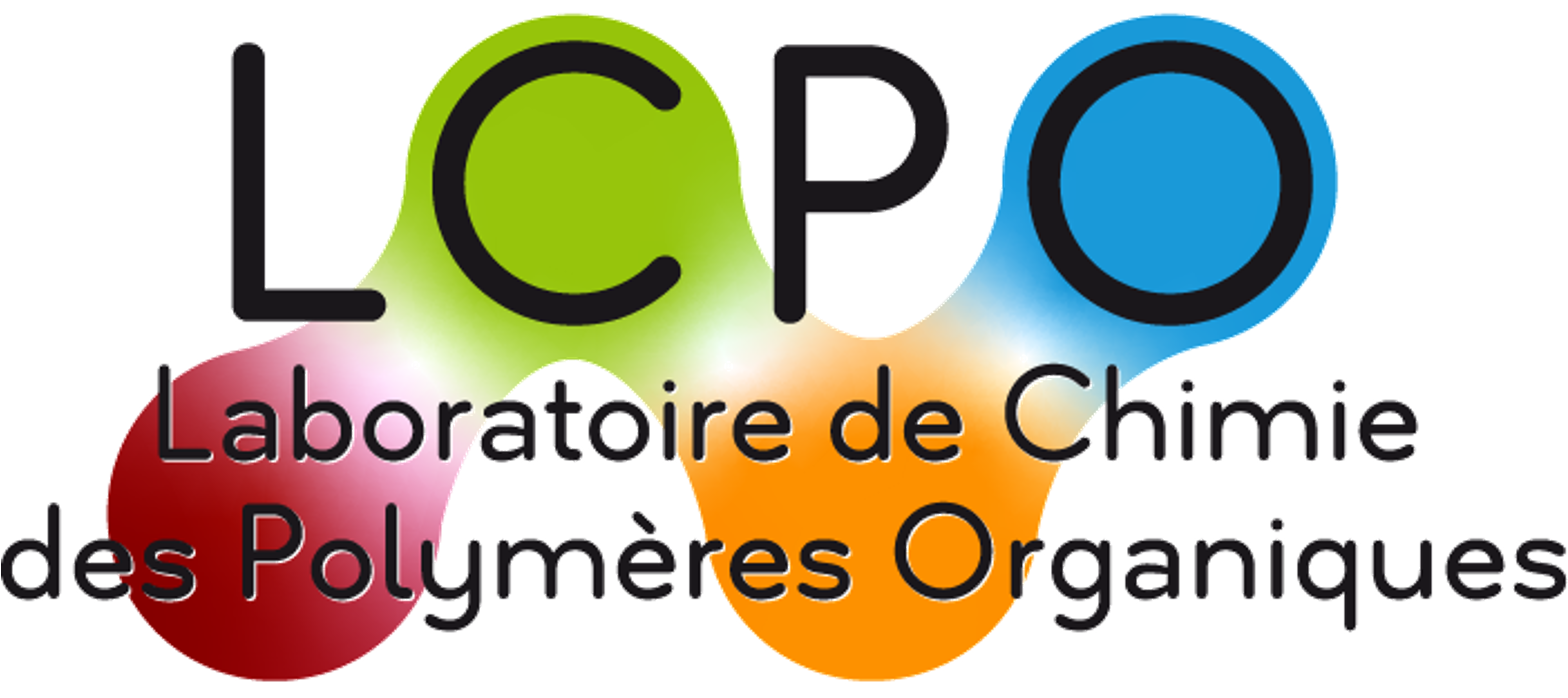Polypeptoids as simplified analogues of antimicrobial peptides
Polypeptoides comme analogues simplifiés de peptides antimicrobiens naturels
Résumé
Antimicrobial peptides (AMP) are an interesting family of natural peptides mainly produced by microorganisms to eliminate their bacterial competitors. AMPs have demonstrated their effectiveness against all types of micro-organisms: the efficacy of AMPs is explained by their ability to destabilize membranes, a physicochemical property linked to their amphiphilic character. Until now, the industrial development of AMPs in pharmacy remains limited and their sensitivity to proteases prevents their therapeutic administration by oral route. By reproducing their chemical composition or certain structural characteristics, polymeric analogues have been proposed to try to overcome these limitations, such as amino acid polymers which are biodegradable and biocompatible.This Ph.D. work presents the preparation of new antimicrobial copolypeptoids by ring-opening polymerization (ROP) of N-alkylated-N-carboxyanhydrides (NNCA) bearing hydrophobic and cationic substituents. These NNCAs monomers bearing hydrophobic alkyl groups (methyl, isopropyl, cyclohexyl, benzyl, p-nitrobenzyl and methylthioethyl) or alkyl precursors of cationic units (Cbz-aminoethyl and Cbz-aminobutyl) were prepared in two synthetic steps: 1) reductive amination with glyoxylic acid, 2) cyclization into NNCA via the Leuchs method through the introduction of N-Boc protection. This methodology enabled us to prepare 9 monomers whose polymerization was studied: we first determined the kinetics of the ROP reactions in DMF and we implemented copolymerization reactions by mixing the NNCA monomers. Using this methodology, we developed a variety of copolypeptoids consisting of cationic and hydrophobic units at various ratios and designed copolymers with different macromolecular architectures such as linear-drug conjugates, cyclic structures or star-like structures.According to the WHO, bacterial infections caused by resistant germs have reached very high levels of incidence worldwide, being responsible for a worrying mortality. One of the most problematic pathogens is Clostridioides difficile, a Gram-positive bacterium responsible for pseudomembranous colitis, a nosocomial infection that is frequently lethal in elderly patients. Current treatment consists in antibiotics that often present recurrences. The goal of this Ph.D. thesis was to develop a medicinal chemistry approach to design antimicrobial copolypeptoids capable of killing this pathogen. First, we prepared libraries of linear copolymers in order to study the structure-antimicrobial activity relationships (SAR) varying the nature of the side chains, the nature of the initiator, the degree of polymerization, enabling us to define a first series of active compounds whose minimum inhibitory concentrations (MIC) were determined towards C. difficile as well as their cytotoxicity on Caco-2 intestinal epithelial cells. In a second step, we prepared a series of cyclic copolypeptoids by developing a new methodology: the ring-expansion polymerization using LiHMDS. This new synthesis enabled us to access macrocyclic polymers and vary the hydrophobic content and microstructure of the peptoid copolymers, to perform a second SAR study with respect to antimicrobial tests on C. difficile. Finally, we extended our study to other macromolecular architectures: star-like copolymers and antibiotic drug conjugates. Overall, SAR studies showed that linear and cyclic copolymers with random microstructure, containing N-benzyl and N-aminobutyl groups exhibited the most interesting antibacterial activity against C. difficile. Finally, antibacterial assays on other bacteria allowed us to evaluate a preliminary antibacterial spectrum of action.
Les peptides antimicrobiens (AMP) sont des biocides naturels produits notamment par les micro-organismes pour éliminer sélectivement leurs compétiteurs L’efficacité des AMPs s’explique par leur capacité à déstabiliser les membranes, une propriété physicochimique liée à leur caractère amphiphile. Jusqu'à présent, le développement industriel des AMPs reste limité et leur sensibilité aux protéases empêche leur administration thérapeutique par voie orale. En reproduisant leur composition chimique ou certaines de leurs caractéristiques structurales, des analogues polymériques ont été proposés pour tenter de lever ces limitations, comme les polymères d'acides aminés qui sont biodégradables et biocompatibles.Cette thèse présente la préparation de nouveaux copolypeptoïdes antimicrobiens par polymérisation par ouverture de cycle (ROP) de N-carboxyanhydrides-N-alkylés (NNCA) portant des substituants hydrophobes ou cationiques. Ces monomères NNCA portant des groupements alkyles hydrophobes (méthyle, isopropyle, cyclohexyle, benzyle, p-nitrobenzyle et méthylthioéthyle) ou des groupements alkyles précurseurs d'unités cationiques (Cbz-aminoéthyle et Cbz-aminobutyle) ont été préparés en deux étapes de synthèse : 1) amination réductrice avec de l'acide glyoxylique, 2) cyclisation en NNCA via la méthode de Leuchs grâce à l’introduction d’une protection N-Boc. Cette méthodologie a permis de préparer 9 monomères dont la polymérisation a été étudiée : nous avons d’abord déterminé les cinétiques de cette réaction dans le DMF et nous avons ensuite mis en œuvre des réactions de copolymérisation en mélangeant les NNCA. Cette approche nous a permis de préparer des copolypeptoïdes plus ou moins hydrophobes et d’inclure ces polymères dans des architectures différentes telles que des conjugués linéaires, des structures cycliques ou des structures étoilées.Selon l'OMS, les infections bactériennes ont atteint des niveaux d'incidence très élevés dans le monde entier et sont responsables d'une mortalité inquiétante. Un des micro-organismes pathogènes particulièrement inquiétante est Clostridioides difficile, une bactérie Gram-positif responsable de colites pseudo-membraneuses, une infection nosocomiale fréquemment mortelle chez la personne âgée. L'objectif de cette thèse a été de développer une approche de chimie médicinale pour concevoir des copolypeptoïdes antimicrobiens capables de tuer cette bactérie. Dans un premier temps, nous avons préparé des bibliothèques de copolymères linéaires afin d'étudier les relations structure-activité antimicrobienne (RSA) en faisant varier la nature des chaînes latérales, la nature de l'initiateur, le degré de polymérisation, nous permettant de préparer des composés actifs dont les concentrations minimales inhibitrices (CMI) ont été déterminées vis-à-vis de C. difficile, parallèlement à leur cytotoxicité sur les cellules épithéliales intestinales Caco-2. Dans un deuxième temps, nous avons préparé des séries de copolypeptoïdes cycliques en développant une nouvelle méthodologie: la polymérisation par expansion de cycle en utilisant le LiHMDS. Cette nouvelle synthèse nous a permis de faire varier le contenu hydrophobe et la microstructure des copolymères peptoïdiques et de réaliser une seconde étude RSA par rapport à des tests antimicrobiens. Finalement, les structures prometteuses et actives nous ont permis d’étendre notre approche de synthèse à d’autres architectures macromoléculaires: des structures dendritiques en étoile et des conjugués à des antibiotiques. Globalement, les études RSA ont montré que les copolymères linéaires et cycliques à microstructure aléatoire, contenant des groupements N-benzyle et N-aminobutyle présentaient l'activité antibactérienne la plus intéressante. Des tests antibactériens menés en parallèle sur d’autres germes nous ont enfin permis d’évaluer le spectre antibactérien.
Origine : Version validée par le jury (STAR)




